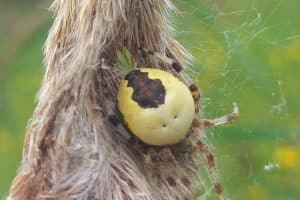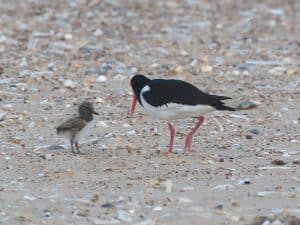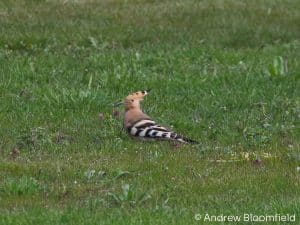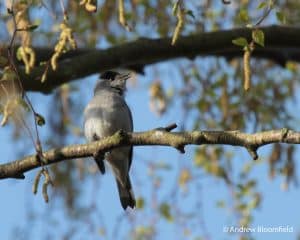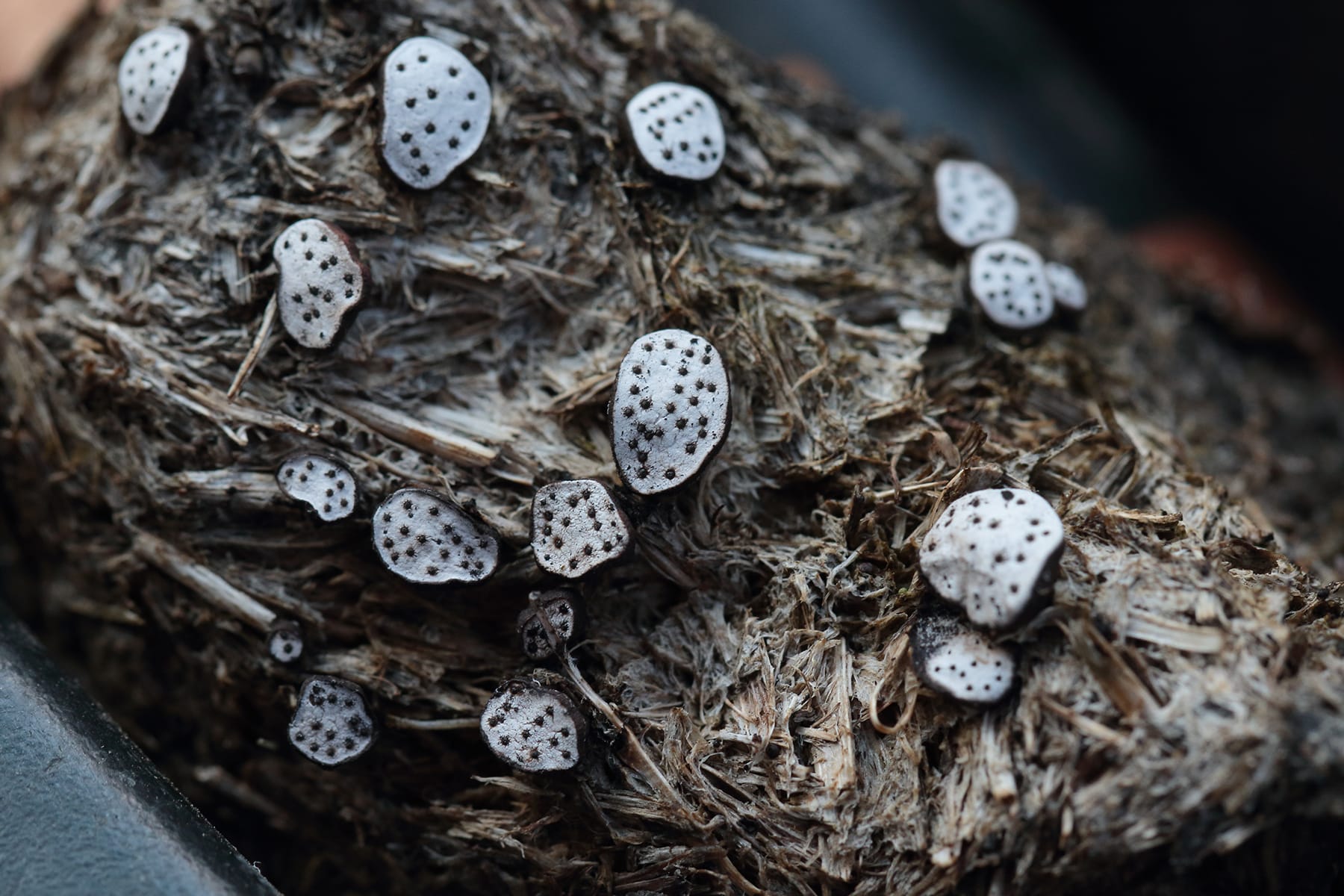
Conservation conversations: July 2025 on the Holkham National Nature Reserve
June 30, 2025 | Nature news | 6 minute read
Fungi discovery
The headline event for late May/early June was the discovery of a tiny fungi – Poronia erici – aka the Rabbit Dung Button – a type of nail fungi. It was discovered on some pony dung along the edge of Burnham Overy sand dunes – the first time this fungi has been recorded on the Holkham National Nature Reserve.
Just two species are known from the UK, and both are scarce. The ‘more common’ of the two is found exclusively on horse or pony dung yet is a larger species than the one seen at Holkham this month and it has never been recorded on the nature reserve.
Poronia erici is known from along the coast at Holme Dunes (on rabbit dung) and has been seen previously on Scolt Head and also at a site in Suffolk on pony dung. We therefore become the 4th UK site to have recorded it, an exciting event for Norfolk mycologists, particularly as it was on pony dung not rabbit dung! It took Tony Leech, the county Fungi Recorder, to microscopically examine the spores to confirm the identification that had already been suggested. At the same time a new site on the dunes was found for Dwarf Earthstar, an uncommon species we usually only see in one small locality.
Bird news
Great news for the ravens living in Holkham Park – they’ve successfully fledged four youngsters. On the reserve, good numbers of Spoonbill young are continuing to fledge giving us another bumper season.
We’ve had the first confirmed breeding of a rare duck, the Garganey, for over 30 years. It is a bird that arrives from wintering grounds in Africa to visit freshwater wetlands where it nests in ditch side vegetation.
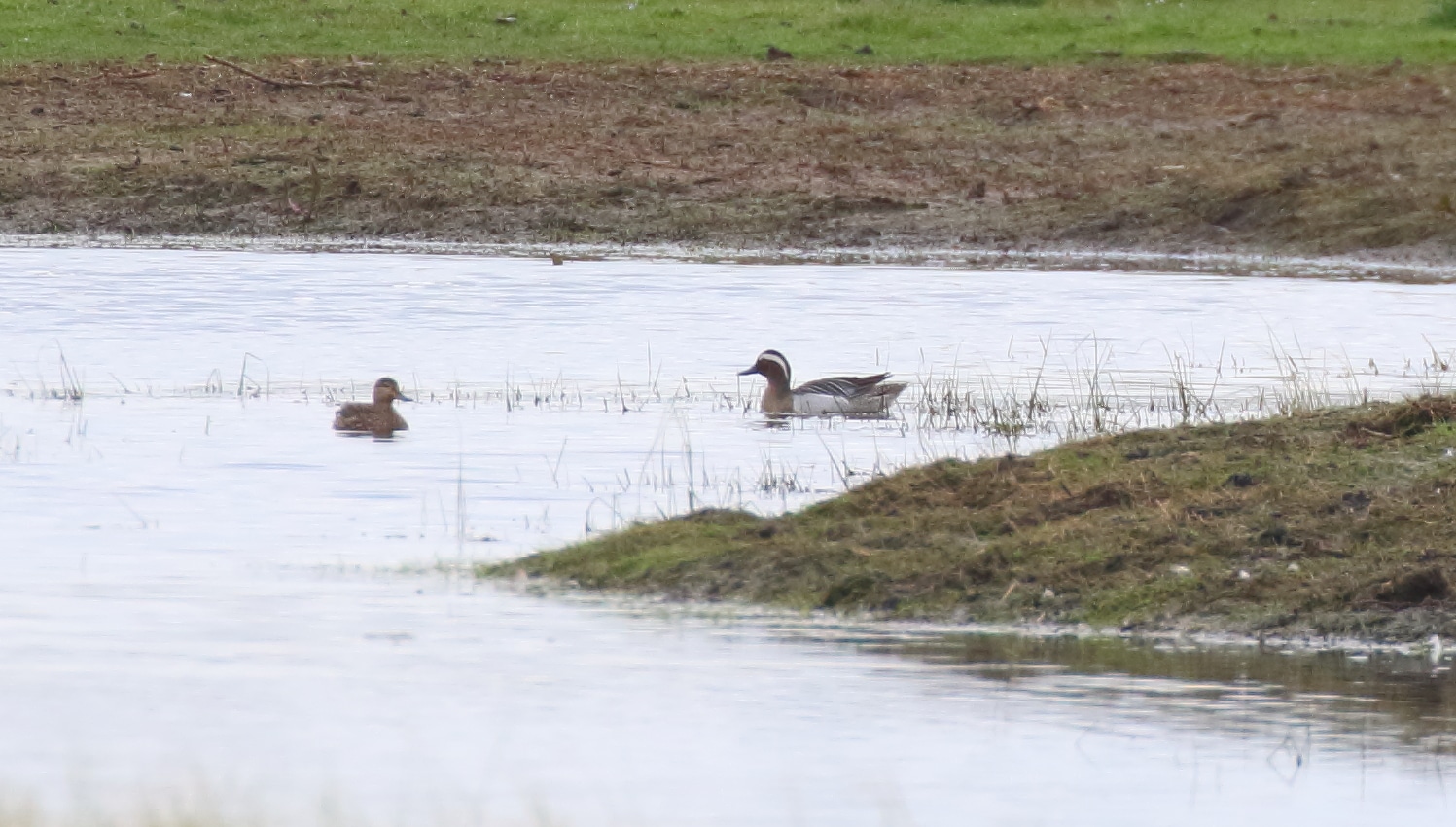
Garganey on the Holkham National Nature Reserve c. Andrew Bloomfield
As spring finished, migrant waders from the north – Green and Wood Sandpipers – started to return in early June, probably suggesting that nesting attempts in the artic forests ended in early failures.
Insect updates
We are really pleased to see fantastic numbers of Norfolk Hawker Dragonflies all throughout the grazing marshes, a relatively recent species here, having only been with us for four years.
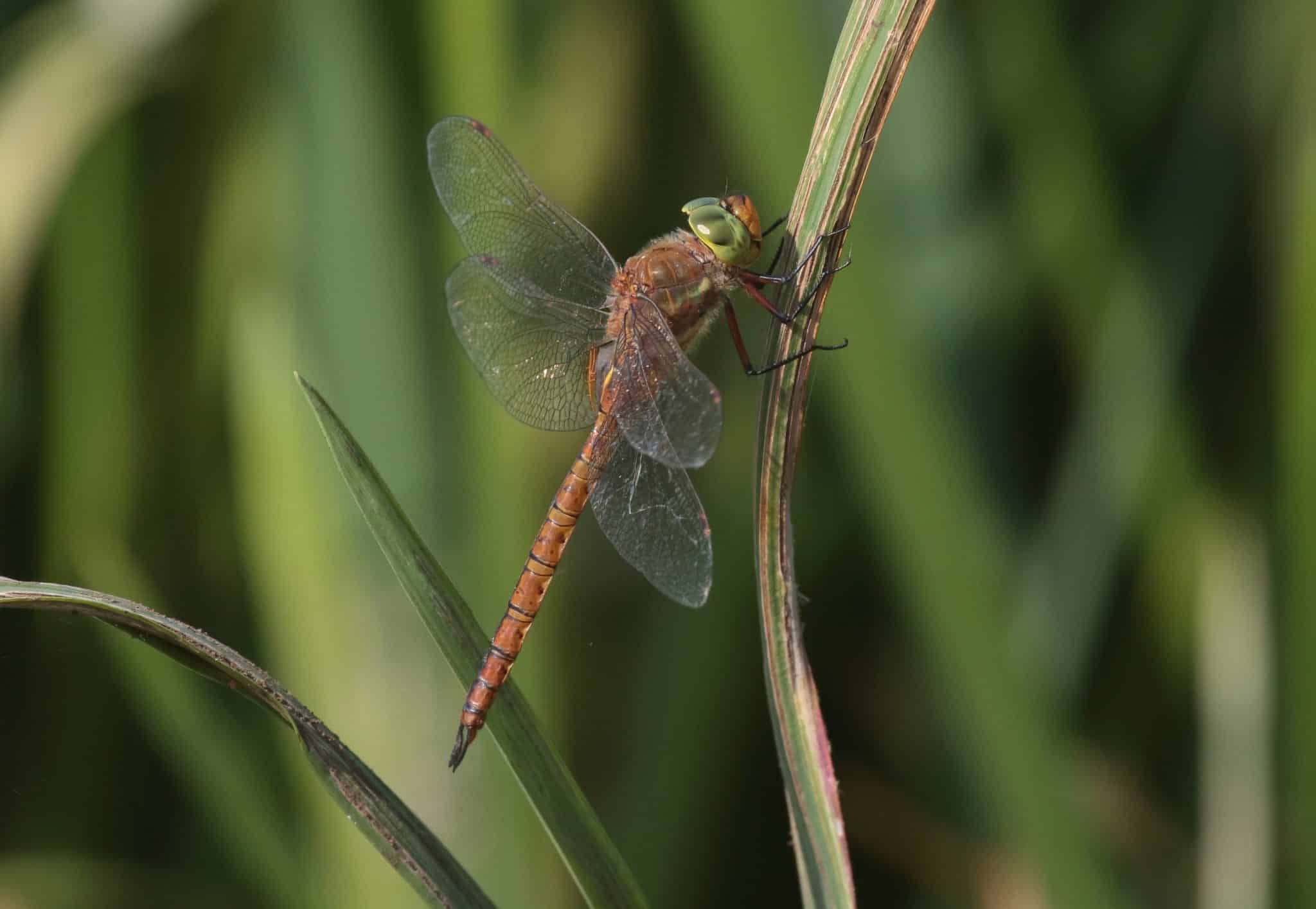
Norfolk hawker dragonfly on the Holkham National Nature Reserve c. Andrew Bloomfield
With the warm weather and southerly winds, we have seen a few migrant butterflies coming in, this very fresh painted lady being one. Elsewhere, the Common Blue has been making the most of the Birdsfoot Trefoil while it was in full flower.
A spectacular sight which many visitors have commented on is the work of the Spindle Ermine Moth, which has created an almost arctic looking landscape caused by the white silk of the moth’s caterpillars. The silk protects them while they munch away at the plant’s foliage. Its a phenomenon that occurs every few years and the good news is that the plants will recover.
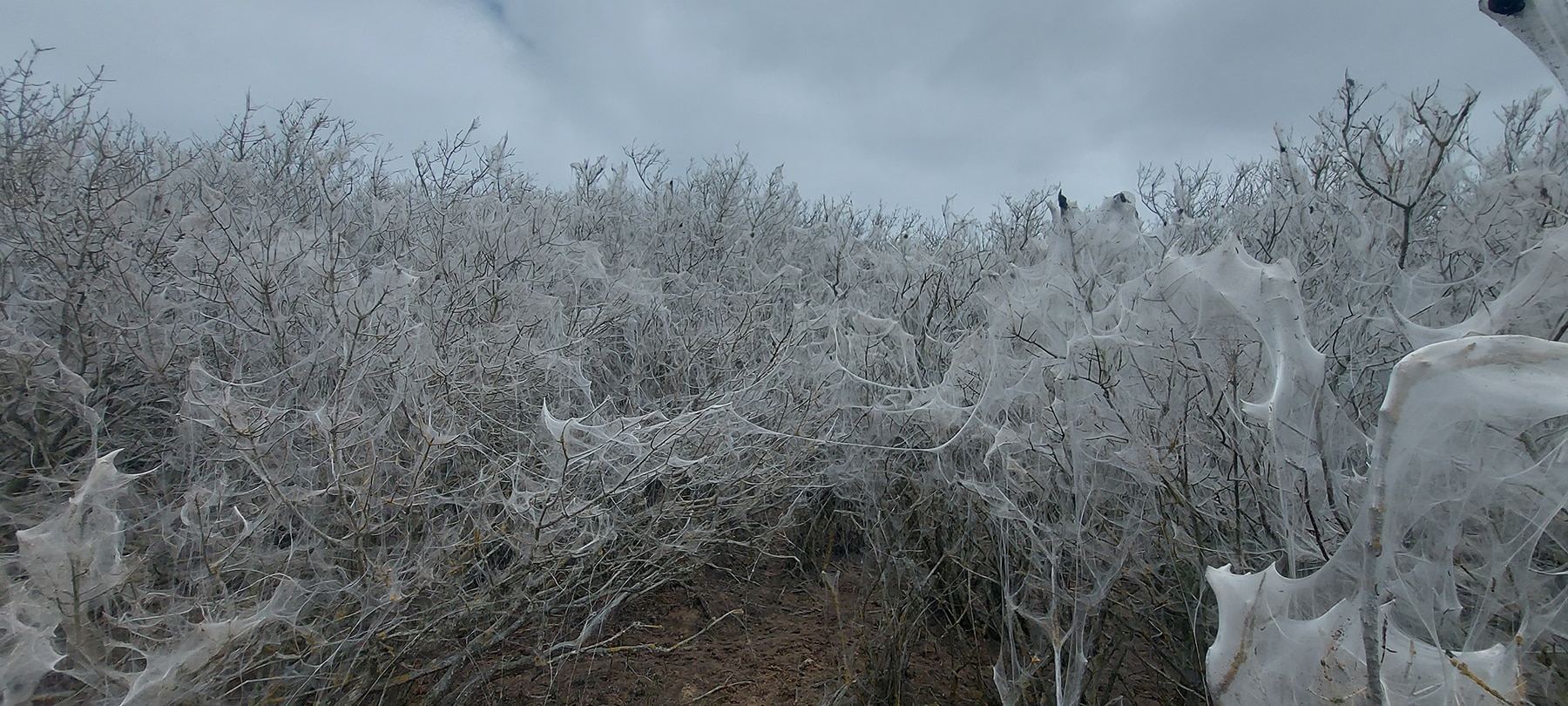
Ermine Spindle silk on the Holkham National Nature Reserve c. Andrew Bloomfield
Flora findings
After a slow start (possibly due to the dry weather) a variety of orchids are currently in flower in the dunes – tread carefully and keep your eyes open for common spotted, pyramidal and bee orchids.
One of the most iconic blooms of summer on the Holkham National Nature Reserve is sea lavender, which is now starting to come into flower and turn the marshes a delightful shade of purple.
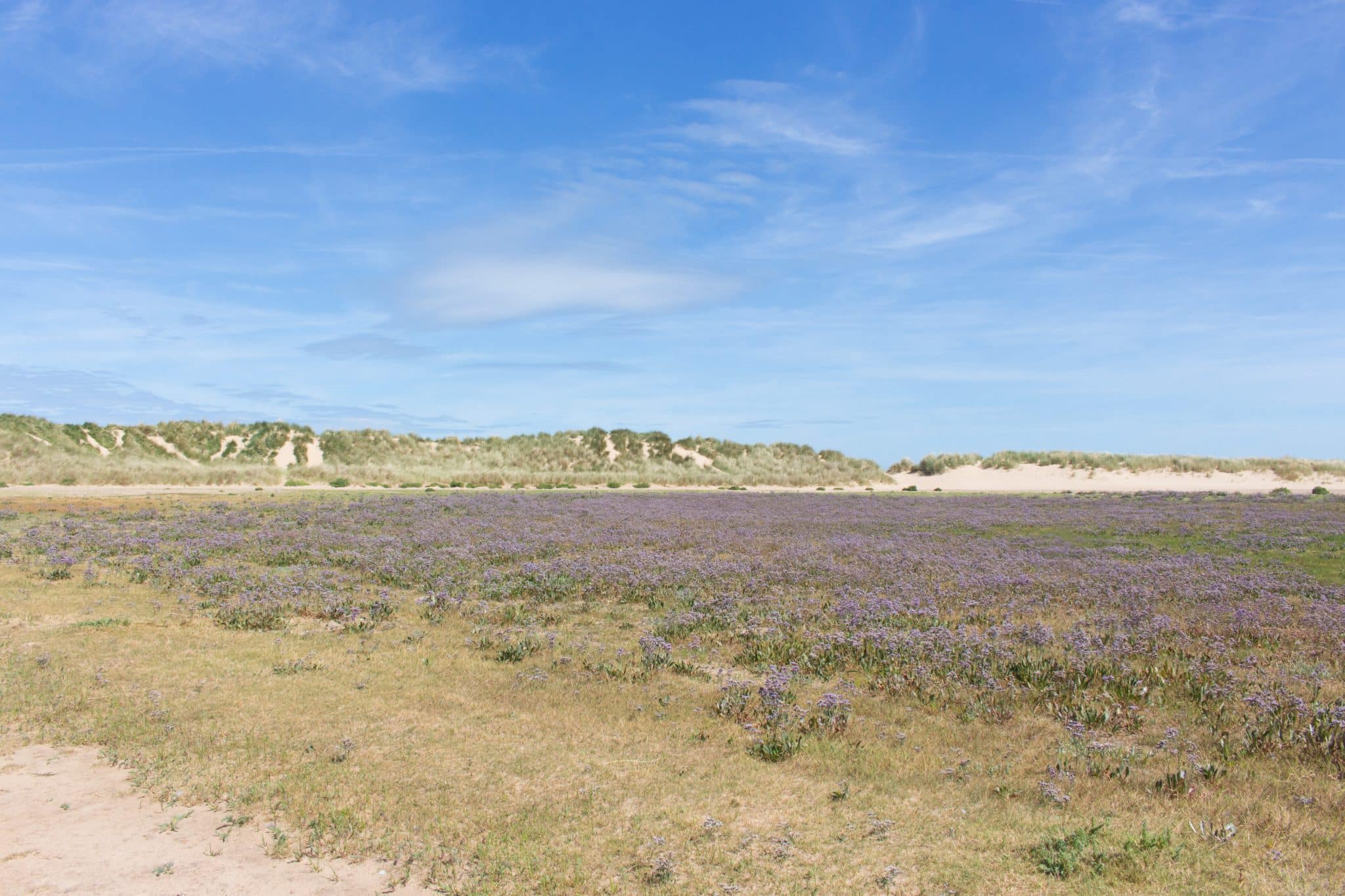
Sea lavender at Holkham beach c. Georgia Dawson
Things to look out for in July
We are overjoyed to have found that we have Creeping Ladies in the pine woods, as these plants are extremely rare and are usually found in the Northeast of Scotland. These have a beautiful essence to them adding hints of white to the common green forestry. When you visit the woods make sure you have a peek since they are a breathtaking sight.
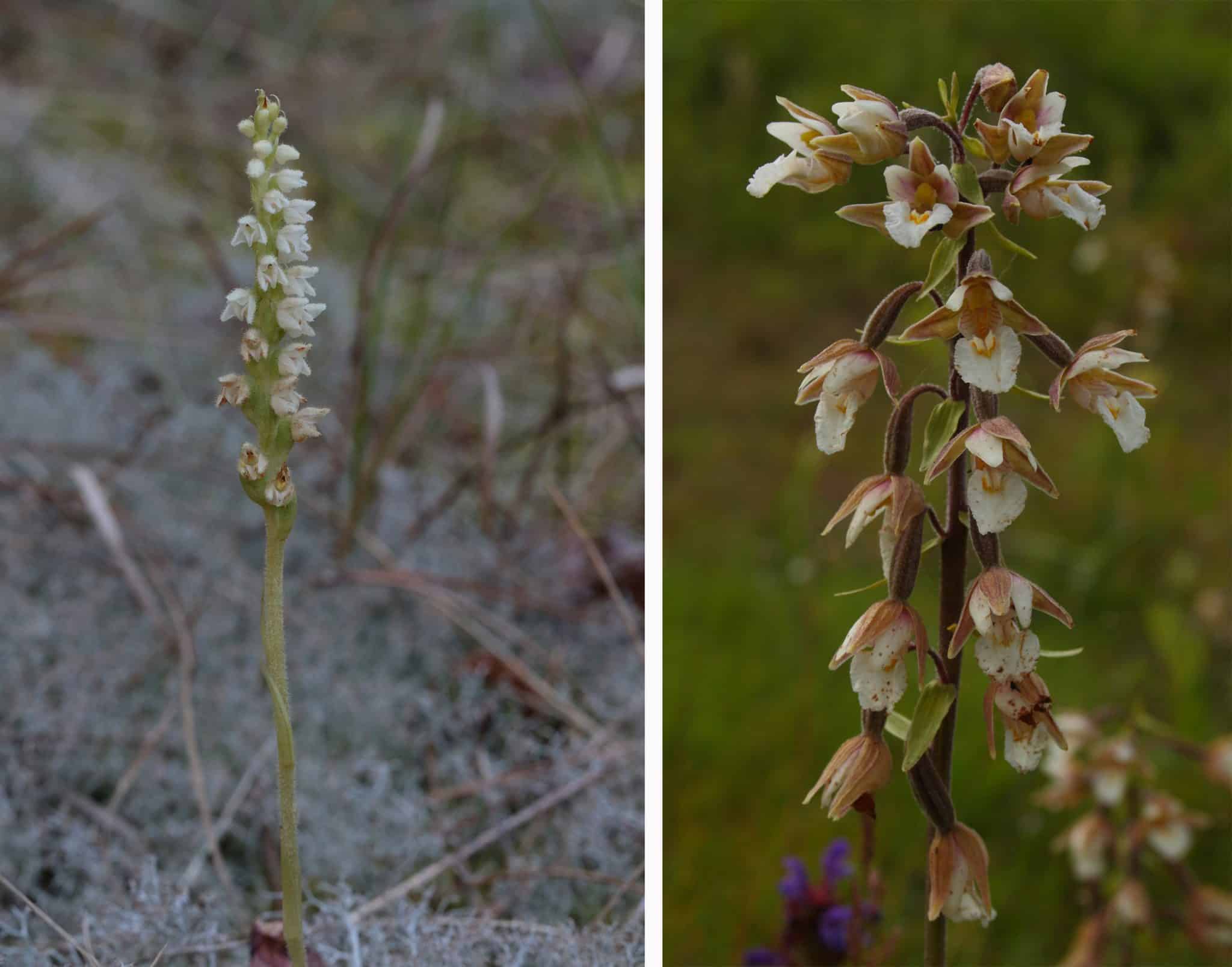
Creeping ladies tresses and marsh helleborine on the Holkham National Nature Reserve c. Andrew Bloomfield
We are also pleased to report there are Marsh Helleborines and Coccinea Early Marsh Orchids starting to flower in the dunes. These orchids catch the eye instantly, with their extravagant dark pink finished with a white frilly lip. The rare Coccinea Orchid is equally striking with its distinctive deep dark crimson finish.
There are also insects to look out for – the White Letter Hairstreaks butterfly, Emperor Dragonfly, White Admirals and the Silver washed Fritillaries butterfly. The White Letter Hairstreak butterfly is a mystical insect, it has a W-shaped streak and its wing is surrounded by an orange edge. This butterfly is extremely hard to spot since it flies around the top of trees, so keep an eye out for it.
The Emperor Dragonfly is the UK’s largest Dragonfly, this has been spotted at the dunes and the wetlands. They have a very recognisable look with distinctive green and blue markings making them fly with such elegance.
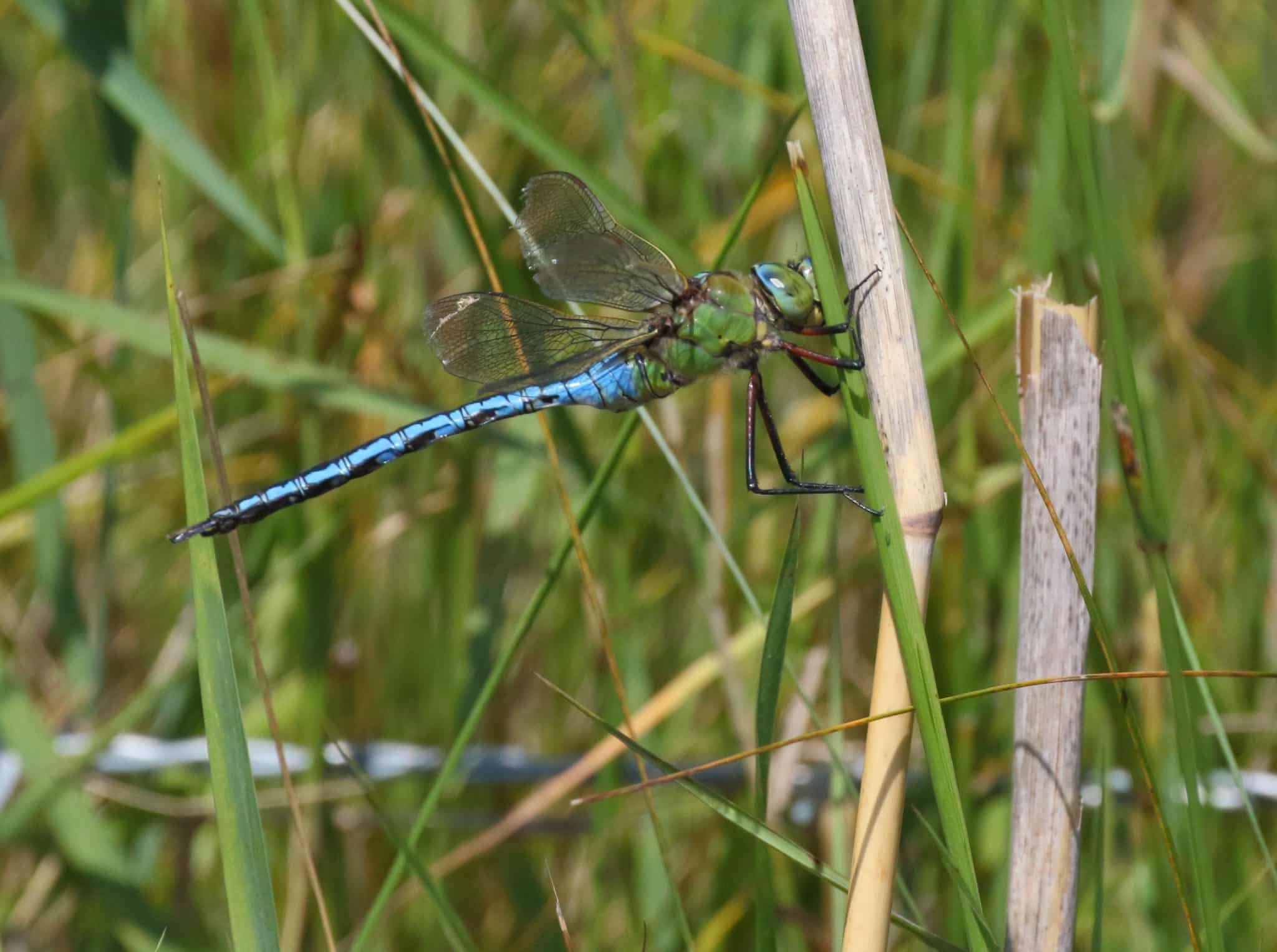
Emperor dragonfly at Holkham National Nature Reserve c. Andrew Bloomfield
The White Admiral butterfly as well as the Silver washed Fritillaries butterfly are to be found in the woods. The White Admiral butterfly has white-banded black wings and it glides through the air with elegance making it a fabulous butterfly to spot.
The Silver washed Fritillaries butterfly is a vibrant orange butterfly known for its silver streaks on the underside side of its wing. This is a summer butterfly seen flying around between the months of June to August, so you have 3 months over the summer to spot it!
For daily updates, follow us on Instagram @holkhamconservation
Back to Journal Back to Journal
